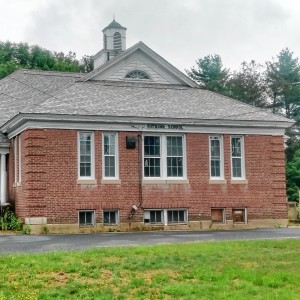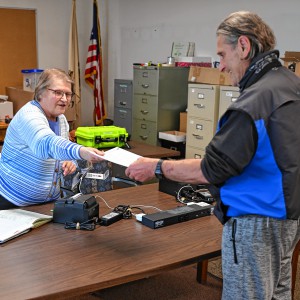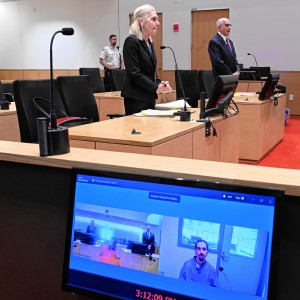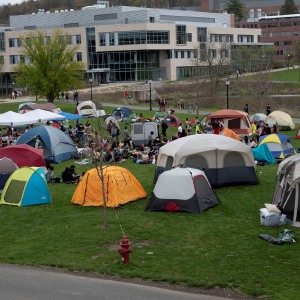Experts warn to heed lessons of previous floods, push analysis of aging infrastructure
| Published: 09-04-2023 5:01 PM |
The Flood of 1936 caused widespread devastation in the Northeast and led to the passage of federal legislation aimed at mitigating damage caused by natural disasters. But the lawmakers who greenlighted the work would likely never have predicted that shifts in global weather patterns would push the infrastructure systems that were installed to the brink.
Climate change is giving regional infrastructure a run for its money, and experts say vigilance and funding availability are vital to avoiding the calamity that rocked New England nearly a century ago and killed 150 to 200 people.
“It’s been really tested. Our infrastructure was built, a lot of it, 100 years ago … and it was just not built to deal with the rainstorms that we’ve been getting recently because of climate change,” said Megan Rhodes, livability program manager at the Franklin Regional Council of Governments (FRCOG). “The storms are becoming much more frequent and intense is the issue. Your typical summer rainstorm will drop an extra 3 to 4 inches of rain that the infrastructure just can’t handle.”
Tens of thousands were left homeless, unemployed and without power for weeks as a result of the 1936 flooding, and recovery efforts were impeded by typhoid and other public health issues. Damage estimates exceeded $9 billion, in 2021 dollars, and the disaster helped launch President Franklin D. Roosevelt’s Flood Control Act of 1936.
In New England, specifically in the Connecticut River Valley, heavy rain was compounded by melting snow. The covered and trolley bridges between Cheapside in Greenfield and Montague City were washed away and local tobacco fields were devastated. The Pioneer Valley is ideal for growing tobacco due to its proximity to the Connecticut River and the level of humidity necessary for the plants. Tobacco grows best within about 5 miles of a river.
A near-record level of precipitation in Massachusetts in July followed a severe drought in 2022. Fourteen inches of rain fell two years ago and that number shrank to 2.91 last year, only to rise back up to 14 this year. In fact, prior to the last couple of years, the largest difference in rainfall in a two-year period was 9.88 inches in 2009 to 3.31 inches in 2010, according to data collected in Greenfield by the National Weather Service’s Cooperative Observer Program.
A heavy downpour on July 21 swelled a creek that flows into the Deerfield River, collapsing a culvert and causing an SUV to fall into the river, with a woman inside. Firefighters rescued the woman, who did not sustain any major injuries. The National Weather Service reported that 3 to 5.5 inches of rain fell between 3 and 4 p.m. that day, forcing the closure of multiple roads and highways, largely in Deerfield and Conway. Nearly every municipality in Franklin County and the North Quabbin region experienced flash flooding. Meanwhile, sanitary sewer overflows started in multiple communities, sending untreated sewage and waste into the Connecticut, Deerfield and Green rivers.
Rhodes and colleague Ryan Clary, a senior GIS specialist at FRCOG, said the region had another close call in August 2011, when Tropical Storm Irene took an unusual path and wreaked watery havoc on the area. Rhodes said a lesson learned from Irene is that the infrastructure “was built during a time of smaller storms.”
Article continues after...
Yesterday's Most Read Articles
A study titled “Public Infrastructure in Western Massachusetts: A Critical Need for Regional Investment and Revitalization,” which was published in October 2021, states roadway maintenance was one of the areas of greatest concern among the 45 western Massachusetts communities that returned surveys to the state Division of Local Mandates in late 2020.
“There is a recognized relationship between the equitable distribution of high-quality public infrastructure and the improvement of living standards. The investment itself acts as a direct economic stimulus and counteracts potential harms that come from lack of infrastructure development, such as lower productivity and reduced economic efficiency,” the report reads. “A lack of infrastructure investment can also have cascading effects, such as power outages because of lack of electric infrastructure maintenance, lack of access to clean drinking water because of environmental hazards, and increased traffic congestion and automobile accidents because of poor traffic management and transportation investments.
“Such harmful effects are already being seen in Massachusetts. As noted in a 2020 report from the Massachusetts Small Bridges and Culverts working group, many of this region’s more than 2,000 small bridges and culverts are in a state of crisis,” the report continues. “A state of disrepair among these structures, many of which are over five decades old, now contributes to ‘local flooding of roadways, public buildings, residences and businesses.’”
Potential solutions outlined in that 2021 report, such as expanding technical assistance grants or providing financing options, require investments in infrastructure to alleviate potential harm to residents. The report also mentions the Small Town Road Assistance Program (STRAP), which it identified as a stressed resource dedicated to the needs of small towns, should be enhanced in two ways. First, the statute enabling the MassWorks Infrastructure Program should be amended to provide 15% to 20% of MassWorks’ annual funding toward STRAP projects, rather than the current 10%. Also, the report states, the $1 million cap per project for STRAP work should be removed, allowing for larger projects to take advantage of the program.
When talking about disaster preparedness in the Pioneer Valley, Clary said, it is important to take into account the terrain in the hilltowns.
“Culverts can quickly become overwhelmed with water and debris that water carries down with it. If you don’t have a correctly sized culvert pipe ... it can’t withstand an intense storm,” he said, adding that the area is not immune to a repeat of what Irene unleashed. “It would be the same if we were to get something like that tomorrow. It would be the same devastation.”
With this in mind, FRCOG has assessed roughly 12,000 culverts in about 12 of its 26 member communities to determine their condition so municipalities can prioritize repair work. Several towns have crafted Municipal Vulnerability Preparedness (MVP) plans to identify weaknesses within their town lines. Rhodes said having an MVP plan also makes a town eligible for grant funding to prepare for climate change impacts.
Rhodes and Clary said local residents do not need to be concerned for their safety, though they should be aware of the situation.
“Paying attention would go a long way,” Rhodes said.
She and Clary said private homeowners can take simple steps, such as clearing leaves from culverts and drainage grates, to reduce the risk of hardship in the future.
FRCOG’s sentiments are echoed by Joshua Shanley, the author of “Connecticut River Valley Flood of 1936.”
“The science and the research indicates that the event we saw [in July] is going to be more common,” he said.
A self-described history geek who worked as a firefighter/paramedic with Northampton Fire Rescue from 2009 until his retirement in 2021, Shanley said the 1936 flood inspired the creation of the Northampton Flood Control System as well as dikes and dams in Chicopee and Springfield and all the way down to Hartford, Connecticut. The infrastructure was built by the U.S. Army Corps of Engineers and then handed over to the respective communities. As for how well it will handle the effects of climate change, Shanley said that remains to be seen.
“What I can say is, they were built in the ’20s, ’30s and ’40s, and they were built to a certain standard at that time,” he said. “They were built with certain climate perimeters in mind. As we look forward, it’s going to be interesting to see how they do hold up.”
Reach Domenic Poli at: dpoli@recorder.com or 413-930-4120.

 $700K debt exclusion would fund repairs to Raymond Hall
$700K debt exclusion would fund repairs to Raymond Hall Erving voters say ‘no’ to $3.7M debt exclusion
Erving voters say ‘no’ to $3.7M debt exclusion Lawyer argues Joshua Hart’s 2018 conviction for Orange murder had inconsistent verdicts
Lawyer argues Joshua Hart’s 2018 conviction for Orange murder had inconsistent verdicts More than 130 arrested at pro-Palestinian protest at UMass
More than 130 arrested at pro-Palestinian protest at UMass